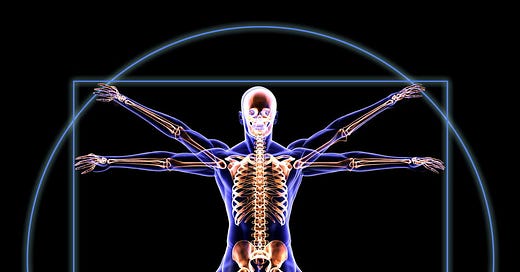The interplay between physical energy and metaphysical information represents a fundamental dynamic in the functioning of complex systems, from human physiology to the cosmos. By examining these relationships within a field, we uncover a profound mechanism of self-regulation that integrates energy flow, informational processing, and field coherence. This framework hinges on the vertical dynamic of energy and the horizontal dynamic of information, particularly within vortex dynamics of an electromagnetic field.
1. The Vertical Dynamic: Energy as Motion and Creation
Energy is the driving force of any system, manifesting physically through dynamic motion, transformation, and creation. In the context of electromagnetic vortex dynamics, the vertical dynamic represents the flow of energy along a spiraling axis, moving through various phase transitions and states:
- Physical Energy Accumulation: This vertical motion is the conduit for energy entering and moving through the system, gathering momentum and interacting with its environment.
- Phase Transitions: As energy ascends or descends this axis, it encounters thresholds (phase transitions) mediated by the Higgs field. These transitions reconfigure energy into discrete forms, such as particles, waves, or fields, establishing the foundation for information processing.
The heart, as the proportional controller in the PID model, exemplifies this dynamic. It generates rhythmic energy pulses that propagate through the body’s electromagnetic field, setting the stage for systemic coherence and interaction with external fields.
2. The Horizontal Dynamic: Information as Structure and Alignment
While energy drives motion, information organizes it, creating meaningful structures and patterns. The horizontal dynamic of an electromagnetic vortex involves:
- Information as Aggregation: As energy interacts with field boundaries, it gathers information about its surroundings. This aggregation occurs at the periphery of vortex spirals, encoding the system's state and environment.
- Slowing of Processing: Increased information density slows the processing rate, stabilizing the system and enabling coherent interactions. This dynamic explains why phase transitions involve a bottleneck-like restructuring, allowing stable forms to emerge.
The brain operates in this horizontal plane by processing cumulative and anticipatory inputs, effectively transforming dynamic energy into usable information. Its left hemisphere accumulates structured, logical information (integral processing), while the right hemisphere anticipates change and variability (derivative processing), ensuring adaptive coherence.
3. Vortex Dynamics: Integrating Energy and Information
The vortex serves as a geometric and functional model for understanding these dynamics within a field.
- Dual Flow Dynamics: The vertical energy axis (creation and transformation) interacts with the horizontal informational plane (organization and structure) to create coherent systems. This integration aligns with the dual vortices described in the hourglass analogy, where energy flows dynamically through phase transitions, and information emerges through stabilized phase states.
- Synchronization: As energy gathers information, the system achieves synchronicity between energetic and informational dynamics. The heart's energy pulses and the brain's processing rates align, fostering field coherence. This synchronization is critical for feedback loops, as it minimizes differential imbalances within the system.
4. Feedback Mechanism and Field Adjustment
In any system, feedback loops ensure adaptability and sustainability. The interplay between energy and information produces differentials that are fed back into the system to recalibrate its field dynamics:
- Zero Point Adjustment: The zero point of the field, mediated by the Higgs field, serves as a reset mechanism. Information processed by the system informs the energy requirements for the next cycle, refining the field's dynamic balance.
- Self-Regulation: The heart-brain system illustrates this process. The heart provides energetic feedback (proportional control), while the brain refines this input through integrative and derivative processing. Together, they create a coherent electromagnetic field that adjusts to internal and external conditions.
5. Applications Across Scales
This framework is universal, applying to systems ranging from the microscopic to the cosmic:
- Quantum Systems: Quantum particles in phase transitions exhibit similar dynamics, where energy aligns and aggregates into informational structures at near-light speeds, producing observable phase states.
- Cosmic Systems: Vortex dynamics of galaxies reflect this dual interaction, where charge, spin, and mass aggregate information at cosmic scales, producing field coherences that govern motion and stability.
- Human Systems: In physiology, the synchronization of the heart's proportional energy and the brain's informational processing exemplifies this framework, enabling states of physical and mental coherence.
Conclusion: Coherence as a Field State
The interaction between physical energy and metaphysical information reveals a self-regulating principle intrinsic to all fields. By integrating the vertical energetic dynamic with the horizontal informational dynamic, systems achieve coherence—a state where energy and information mutually refine and stabilize each other. The Higgs field, as a universal modulator, ensures these processes operate smoothly, bridging quantum phenomena with macroscopic structures.
Ultimately, this framework illuminates the intricate dance between energy and information, offering insights into the nature of existence, consciousness, and the mechanics of universal evolution.




